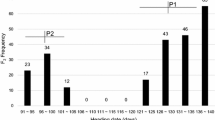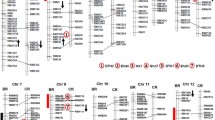Abstract
A proposed major quantitative trait locus (QTL) for photoperiod sensitivity on chromosome 6 in rice was examined by introducing a chromosomal segment from a sensitive line into an insensitive one. The crossing experiments showed that a range of variation in heading date occurred in the later generations and that the region might contain at least a major gene and two additional recessive genes controlling photoperiod sensitivity. Gene mapping experiments showed that the major gene was Se-1 and that a recessive gene (tentatively named se-pat) was loosely linked to it. The responses to photoperiods were examined among the different genotypes under natural and controlled conditions. The two genes acted additively on the degree of photoperiod sensitivity. However, se-pat plants showed a response to photoperiods that differed from that of the other sensitive lines; a short-day treatment at the seedling stage delayed heading in the former plants, suggesting that the manner of its expression was age-dependent. A recessive gene similar to se-pat seemed to be widely distributed in wild and cultivated rice, suggesting that the gene complex in the region plays a significant role in response to photoperiod.
Similar content being viewed by others
Author information
Authors and Affiliations
Additional information
Received: 8 October 1997 / Accepted: 1 April 1998
Rights and permissions
About this article
Cite this article
Dung, L., Inukai, T. & Sano, Y. Dissection of a major QTL for photoperiod sensitivity in rice: its association with a gene expressed in an age-dependent manner. Theor Appl Genet 97, 714–720 (1998). https://doi.org/10.1007/s001220050947
Issue Date:
DOI: https://doi.org/10.1007/s001220050947




